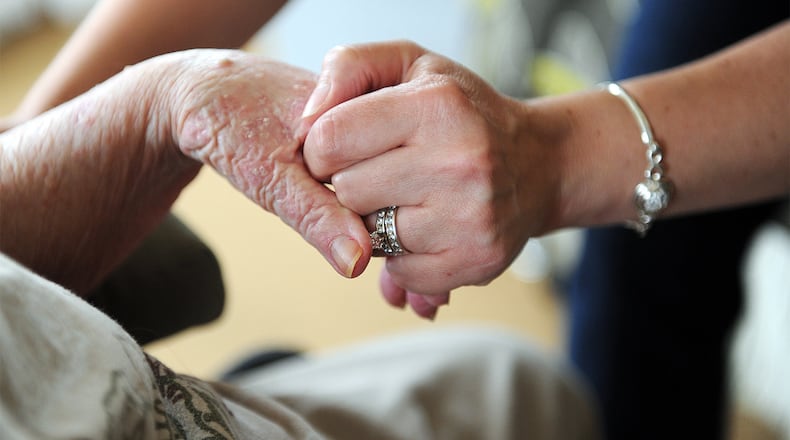An estimated 5.4 million Americans are affected by Alzheimer’s disease, making it the sixth leading cause of death in the U.S.
According to a recent report from the Atlanta-based Centers for Disease Control and Prevention, the death rate from the disease has risen by 55 percent in recent decades.
Experts collected data from death certificates and found that 93,541 Americans who died in 2014 had Alzheimer’s cited as the cause of death — a rate of 25.4 deaths per 100,000 people.
That’s a 54.5 percent increase since 1999, when the rate of Alzheimer’s deaths was 16.5 deaths per 100,000 people, according to the CDC.
In Georgia, Alzheimer's deaths rose by about 68.9 percent between 1999 and 2014. CDC state data showed 2,670 reported deaths caused by Alzheimer's disease in 2014 and 1,080 in 1999.
» RELATED: How does Alzheimer's disease kill you?
By 2050, experts estimate the number will jump to 13.8 million afflicted U.S. adults ages 65 and up.
The increase is due to multiple factors, including the growing population of older adults, increased reporting and diagnosis by physicians and medical examiners among others, according to the report.
While most U.S. Alzheimer’s deaths occurred in a nursing home or a long-term care facility, that number has dramatically declined since 1999 (from 14.7 percent to 6.6 percent in 2014).
» RELATED: Living with Alzheimer’s and the fight to combat it
Instead, more and more patients died at home instead of in medical facilities.
About a quarter of Alzheimer’s patients in 2014 spent their last days at home compared to just 13.9 percent in 1999.
“Millions of Americans and their family members are profoundly affected by Alzheimer's disease,” CDC Acting Director Anne Schuchat said in a statement. “As the number of older Americans with Alzheimer's disease rises, more family members are taking on the emotionally and physically challenging role of caregiver than ever before.”
» RELATED: How to help Alzheimer’s patients enjoy life, not just ‘fade away’
In addition, patients, caregivers and publicly funded long-term care facilities bear significant financial and societal costs due to increasing rates of Alzheimer’s deaths.
Experts recommend more federal funding toward caregiver support and education and toward research to find a cure.
According to the CDC report, the U.S. is estimated to spend a total $259 billion in 2017 on care costs for those with Alzheimer’s and other forms of dementia.
» RELATED: Don’t go it alone when caring for a spouse with dementia
And those caring for Alzheimer’s or dementia patients provided 18.2 billion hours of unpaid assistance in 2015.
"This is a tidal wave of Alzheimer's disease that is now upon us. We've been saying baby boomers are getting older and we have to be ready. Now it's here. It's here. And it's not going away unless we do something serious about it. Ultimately we want to eradicate this disease. That is possible," Keith Fargo, director of scientific programs at the Alzheimer's Association, told CBS News.
About the Author
Keep Reading
The Latest
Featured



